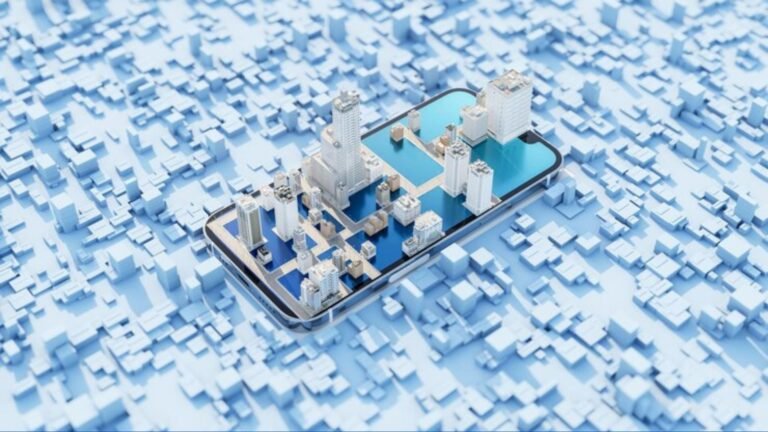The Fourth Industrial Revolution is here! And its biggest powering force is the 5G technology. This technology came about in 2019. And now, it is set to reach the highest levels of development in 2025. In the coming years, it is expected to have billions of subscribers.
What makes 5G so amazing? Its greatest feature is the unprecedented speed at which data submits and arrives at its destination. The delay between submission and arrival, known as latency, will be reduced significantly. 5G technology also promises to deliver extremely high volumes of data and the number of connected devices.
Well, we have come a long way from the 1st generation of communication that used large devices and offered clunky service. The 5th generation of connectivity is bound to make its mark for individuals, industries, and at the governmental level as well.
Here is a list of the top industries being influenced by 5G. Let’s get started.
Healthcare Industry
2024 saw a rise in automation trends in the healthcare industry. More and more tasks are being automated to streamline efficiency in hospitals and clinics.
For example: AI is being used to transcribe reports and handle the administrative aspect of patient records. Additionally, AR technology is revolutionizing surgical procedures. All these tasks require high connectivity and data transmission speeds, which 5G technology can provide.
5G can also aid in the diagnostic aspect of healthcare by helping AI tools work more efficiently. Moreover, doctors will be able to make remote diagnoses through high-speed transmission of video, image, and audio data from patient to doctor and vice versa.
Education
When the COVID pandemic hit, it shook up the education sector like none other. The traditional methods of the educational field were completely scattered and a significant shift was made towards digital methods to keep the domain from crumbling.
In recent years, virtual classes and online modes of learning have become very common. 5G technology has the potential to streamline these new modes of education and solve several problems that come with a lack of physical interactivity.
Not only can it solve connectivity issues across the globe, but it can also facilitate more interactive and immersive classes via AR or VR technologies. Such technologies require a large volume of data and high transmission rates- a problem that can be solved by 5G.
Well, keep in mind that Virtual classrooms and AR-VR enhanced learning heavily rely on dependable internet connectivity. If you want an uninterrupted learning experience and are interested in upgrading your internet, check out the 5G internet options near you like I did when I was exploring the internet in my area to find a reliable service and the right provider for me.
Entertainment
There was a time when radio and television were the only modes of entertainment. Then came the internet which brought entertainment in the form of social media, video games, YouTube, podcasts, etc. Now, the latest 5G technology can bridge the gap between physical and virtual worlds like never before.
Gamers can run extremely high-speed games with heavy graphics with ease through 5G. Even this is outdated in front of the AR and VR features of the newest modes of entertainment.
Video game players can immerse themselves in the game’s fictional world. Individuals can even travel virtually with AR/VR. 5G technology can streamline all these operations with unimaginable speeds and connectivity across the globe.
Automobile Industry
Vehicular transportation is leaning more and more towards automation. Automobile industries are looking to create autonomous cars that utilize real-time data from other vehicles, road conditions, and safety protocols to facilitate a seamless transport experience.
This technology will require high speeds and connectivity in order to operate smoothly.
With 5G technology in the automobile industry, the vehicles will essentially “talk” to each other and collaborate to make transport autonomous.
Additionally, 5G can enable remote traffic monitoring by transmitting large amounts of data from the road to infrastructure, such as traffic lights and road sensors.
Manufacturing
Currently, several aspects of the manufacturing procedure are performed on paper or video to help technicians and engineers visualize the planning and process. This can be shifted to AR/VR with the help of 5G technology.
Additionally, a lot of the machinery used in manufacturing is controlled via controllers. With the high-speed connectivity offered by 5G, sensors can be installed in the machinery, which will essentially create the 5G Internet of Things. This refers to the connection of various devices through sensors, software, or the internet.
Retail
Like manufacturing companies, retailers can also benefit from the high speeds and large amount of connectivity offered by 5G to streamline their operations. Sensors and trackers can improve the management of products.
Other than that, the ability to send and receive large amounts of data, as well as connectivity across many devices and locations can lead to smooth operation between supply chains.
Most importantly, the AR/VR experience being offered by several retail giants can be enhanced via 5G. For example: companies can offer an AR feature that allows customers to project furniture virtually before making a purchase.
Wrapping up
The 5th generation of connectivity is bound to revolutionize all aspects of life. Individuals will be connected like never before and the operations of industries will undergo a radical transformation. The future of connectivity has arrived, and it is looking great.

